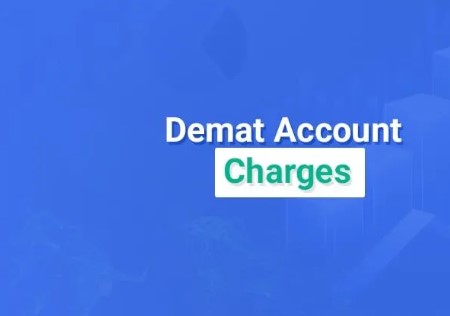A Deep Dive into Demat Account Fees: What to Expect

Any financial professional who wants to maximize their returns must be knowledgeable about the various costs associated with a demat account. Even though a Demat account is uncomplicated for advanced giving, being cognizant of the charges involved can help you make informed decisions and select the appropriate beneficiary. What are the unique costs you may encounter and how can you manage them?
Essential Demat Account Charges
Account Opening Fees: The journey of opening a demat account begins with initial setup charges, though the landscape has changed significantly in recent years. To attract new and innovative customers and remain competitive in the market, many of the top Demat account providers have eliminated the initial deposit amount. The introduction of this measure has made it more convenient for retail financial experts to attend the exhibition. However, it’s easy to check the fine print — some vendors may delay these prices at least temporarily – by either setting certain minimum or specific trading volumes during the first few months.
Annual Maintenance Charges (AMC): Keeping up with a Demat account can result in one of the most significant repeating costs, which is the Yearly Support Charge. These expenses usually range between ₹300 and about ₹800 annually, fluctuating among different benefit providers. To attract inactive customers, certain institutions provide discount rates for the initial year. The AMC structure might also depend on your portfolio value and trading frequency. It is essential to be aware of these costs for extended investment strategy, as they influence your typical returns despite successful execution.
Transaction-Based Fees
Securities Transfer Charges: The process of transferring securities between different demat accounts involves specific exchange costs that should be carefully evaluated. Every exchange introduces charges that are determined by the number of ISINs (International Securities Identification Numbers) entered, regardless if you’re moving offers to another Dematerialization account or consolidating your portfolio with an unused benefit supplier. These fees might seem small for individual transactions but can accumulate significantly when managing a diverse portfolio requiring frequent transfers.
Trading-Related Costs: The relationship between your Dematerialization account and trading activities involves several interconnected charges. Transaction fees apply whenever you buy or sell securities, typically calculated as a percentage of the trade value. Brokerage charges vary based on the service provider and type of trade, with some modern demat apps offering competitive rates for frequent traders. Statutory charges imposed by regulatory bodies are mandatory and include Securities Transaction Tax (STT), stamp duty, and exchange transaction charges. Settlement fees ensure the smooth completion of trades and vary based on the settlement cycle and security type.
Digital Platform Fees
Modern Demat Apps Charges: The evolution of digital trading has introduced new types of charges through modern demat apps. Real-time market data feeds provide crucial information for active traders but might require additional subscriptions. Advanced charting tools offer sophisticated analysis capabilities, often available through premium packages. Research reports access gives investors valuable insights into market trends and company performance, though comprehensive reports might come at an extra cost. Portfolio analysis tools help track investment performance and make informed decisions, with advanced features often reserved for premium account holders.
Understanding Fee Structures
Regular vs. Premium Services: Different demat account categories serve various investor needs with corresponding fee structures. Standard accounts provide essential services with basic features, suitable for regular retail investors. Premium accounts offer advanced tools and preferential service levels but come with higher maintenance charges. Corporate accounts cater to business entities with specialized features for managing institutional investments. The key is matching your investment style and requirements with the appropriate account type to optimize costs.
Digital vs. Physical Services: Modern demat apps have revolutionized how investors interact with their portfolios while offering more competitive pricing. The reduced operational costs of digital platforms often translate to lower fees for investors. Automated processes eliminate manual intervention, reducing both time and cost. Digital communication channels streamline information flow and reduce paper-based charges. However, some traditional services might still be necessary, requiring a balanced approach to service selection.
Cost Optimization Tips
Regular Monitoring: Effective management of your Dematerialization account expenses requires systematic monitoring approaches. Monthly fee statements provide detailed breakdowns of all charges incurred, helping identify areas for optimization. Transaction cost analysis reveals patterns in trading expenses and opportunities for reduction. Service utilization reviews help determine which features justify their costs and which might be unnecessary. Regular monitoring of charge patterns helps spot unusual fees or areas where costs could be optimized.
Consolidation Benefits: Managing multiple Dematerialization accounts often leads to increased overall costs that can be optimized through careful consolidation. Consider the cumulative impact of maintaining several accounts, each with its own AMC and associated charges. Track the total costs across all accounts to identify potential savings through consolidation. Review service subscriptions across platforms to eliminate redundant features. A streamlined approach to account management often results in both cost savings and improved portfolio oversight.
Read also: How Web Development Can Enhance Your Business’s Customer Service And Support
Future Trends in Demat Account Pricing
Digital Transformation Impact: The continuous evolution of demat apps is reshaping traditional fee structures in significant ways. The rise in competition among benefit providers has led to more efficient estimating and innovative expense models. Lowering costs for conclusion clients may be accompanied by the adoption of technology-based efficiencies, which in turn reduce operational expenses. The benefit providers are highlighting value-added features to justify their expenses while maintaining competitive estimates. The trend towards digital transformation suggests continued evolution in how demat account services are priced and delivered.
Conclusion
Understanding demat account fees is essential for optimizing investment costs and making cost-effective decisions. Regular review of fees helps avoid unnecessary expenses. When selecting a Dematerialization account provider, consider your investment style, trading frequency, and required features. Compare traditional providers and modern demat apps to find the most cost-effective solution. Factor in service quality, platform reliability, and available features when making your decision, as the cheapest option may not always be the best.
Stay informed about changes in fee structures and regularly review your account charges. This proactive approach helps you optimize costs while ensuring you have access to all the features and services needed for successful investing. With careful planning and regular monitoring, you can maintain a healthy balance between service quality and cost efficiency in your top demat account management.
Visit Bajaj Finserv today to open your Demat account and experience the benefits of cost-effective investing.



